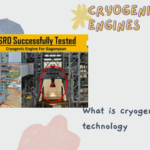GSLV-MkIII on course as cryo engine passes big tes

The much-needed indigenous heavy-lift space launcher, GSLV-MkIII, looks set for a full-fledged first flight in December after its cryogenic engine passed a test to qualify it for use in future missions.
ISRO Chairman: A.S. Kiran Kumar
CROSS REFERENCES
The Geosynchronous Satellite Launch Vehicle was primarily developed to launch INSAT class of satellites into Geosynchronous Transfer Orbits. GSLV is a three stage launcher that uses one solid rocket motor stage, one Earth storable liquid stage and one cryogenic stage. The most recent flight of GSLV, the GSLV-D5, placed GSAT-14 into its planned orbit and marked the first successful flight of the indigenous cryogenic stage. Earlier, GSLV had launched various communication satellites among which EDUSAT is notable, being India’s first satellite built exclusively to serve the educational sector through satellite based distance education. A communication satellite usually operates from the Geosynchronous orbit catering to requirements in communication, television broadcasting, meteorology, disaster warning etc.
Geosynchonous Orbit (GEO) takes a satellite around the Earth at a rate of once per day, keeping it roughly in the same area over the ground.
A Geostationary Orbit (GSO) is a geosynchronous orbit with an inclination of zero, meaning, it lies on the equator. Geostationary describes how a satellite in this orbit remains fixed with respect to an observer on the ground. This is an ideal orbit for communications satellites, since ground-based antennas can remain pointed at the same spot in the sky.
A geostationary satellite is an earth-orbiting satellite, placed at an altitude of approximately 35,800 kilometers (22,300 miles) directly over the equator, that revolves in the same direction the earth rotates (west to east). At this altitude, one orbit takes 24 hours, the same length of time as the earth requires to rotate once on its axis. The term geostationary comes from the fact that such a satellite appears nearly stationary in the sky as seen by a ground-based observer.
Rocket propellants come in solid, liquid and gaseous forms. As compared to solid and liquid propellants, gaseous propellants have to be compressed to very high pressures or cooled to very low temperatures in order to achieve a high density. Propellants that are usually gases at room temperature but become liquids when cooled to very low temperatures to achieve the high density are called cryogenic liquid propellants.
Cryogenics means – It is the study of the production of materials at extremely cold temperatures. The temperatures studied in cryogenics are those below -243.67 degrees Fahrenheit (120 Kelvin); such low temperatures do not occur in nature. A cryogenic rocket engine is a rocket engine that uses a cryogenic fuel or oxidizer, that is, its fuel or oxidizer (or both) is gases liquefied and stored at very low temperatures.
Thus, all cryogenic rocket engines are liquid engines but they should be distinguished from rocket engines that use earth-storable liquid propellants that are liquids at ordinary temperatures and can, therefore, be stored as liquids easily. The most common cryogenic propellants used in rocket engines are liquid hydrogen (LH2), which liquefies at −253° C, as the fuel and liquid oxygen (LOX), which liquefies at −183° C, as the oxidiser.
Most important reason to prefer cryogenic engine is its efficiency. Cryogenic engine provides more thrust with each kg of propellant it uses compared to other propellant.
Cryogenic propellants are preferred as rocket propellants when rockets have to carry payloads of high mass because they have the greatest efficiency in terms of thrust generated. The advantage of cryogenic propellants is that they are the most energetic and, therefore, have the highest specific impulse. The LOX+LH2 combustion yields the highest amount of total energy and the product of combustion is water vapour, with a low molecular weight.






0 Comments